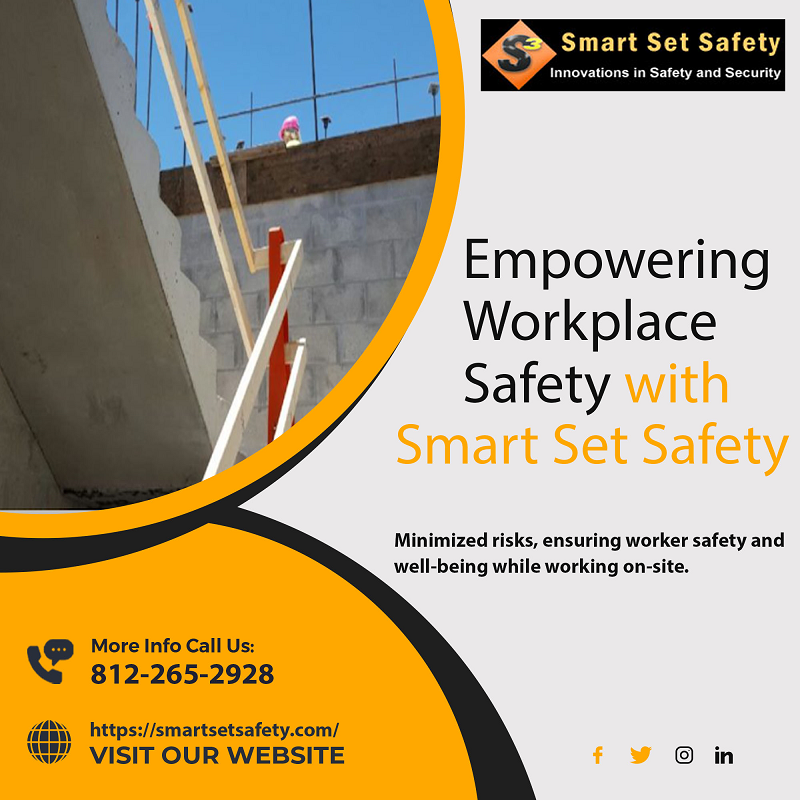
Introduction:
Regarding construction safety, choosing between temporary and permanent safety rail systems can significantly impact your project’s efficiency and cost-effectiveness. While both serve the crucial purpose of preventing falls from heights, each has unique advantages and considerations. In this blog, we will delve into the key differences between temporary and permanent safety rail systems, helping you decide which is the right fit for your construction project.
Temporary Safety Rail Systems: Flexibility and Mobility
Temporary safety rail systems are designed for short-term use, making them ideal for construction sites where the need for fall protection is temporary or constantly changing. Here are some key points to consider:
1. Easy Installation and Removal:
Temporary safety rail systems are known for their quick and straightforward installation. They often feature modular components easily assembled without welding or extensive construction work. This ease of installation allows for rapid deployment and dismantling as the project progresses.
Additionally, temporary systems can be reconfigured and relocated as needed, making them adaptable to changing work zones and project phases. This flexibility minimizes downtime and efficiently uses safety measures throughout the construction site.
2. Cost-Effective:
Temporary safety rail systems are generally more cost-effective than their permanent counterparts. Since they are not intended for long-term use, they require a lower upfront investment. This cost-effectiveness is particularly advantageous for projects with limited budgets or those where fall protection needs will diminish as the project nears completion.
However, it’s essential to consider the trade-off between initial cost savings and potential reusability. Investing in high-quality, reusable temporary rail systems may provide long-term savings if you have multiple projects with similar fall protection requirements.
3. Compliance and Regulations:
Temporary rail systems must comply with safety regulations and standards applicable to construction sites, such as those set forth by OSHA in the United States. It is crucial to ensure that the temporary system you choose meets all regulatory requirements to maintain a safe working environment and avoid penalties.
Permanent Safety Rail Systems: Durability and Longevity
Permanent rail systems are designed for extended use. They are typically installed in settings where fall protection is a long-term concern, such as on rooftops, bridges, or industrial facilities. Here’s what you need to know:
1. High Durability and Reliability:
Permanent safety rail systems are built to withstand harsh environmental conditions and provide long-lasting fall protection. They are constructed from durable materials like stainless steel or aluminium and are designed for structural stability. This robustness ensures they remain effective throughout their lifespan, requiring minimal maintenance.
2. Minimal Maintenance:
Unlike temporary systems, permanent safety rail systems require less ongoing maintenance. Their longevity and durability mean they can provide reliable fall protection for many years with routine inspections and minimal repairs. This can lead to long-term cost savings, particularly for facilities with continuous fall protection needs.
3. Customization and Integration:
Permanent safety rail systems can be customized to fit the specific needs of your facility or structure. They can be integrated into the design seamlessly, offering unobtrusive protection. This customization ensures that the rail system complements the aesthetics and functionality of the site while providing the necessary safety measures.
Choosing the Right System for Your Project:
The choice between temporary and permanent safety rail systems depends on various factors, including the duration of fall protection needs, budget constraints, and project-specific requirements. For short-term or evolving needs, temporary systems offer flexibility and cost savings. In contrast, permanent systems are ideal for long-term protection and can provide durability and reliability.
Ultimately, the right choice depends on carefully evaluating your project’s unique circumstances. Whichever option you select, prioritize safety, regulatory compliance, and the long-term success of your construction safety osha project.
Conclusion:
Both temporary and permanent rail systems have advantages and are essential for ensuring construction site safety. By understanding the distinctions between them and considering your project’s specific needs, you can make an informed choice that promotes worker safety and project efficiency.

